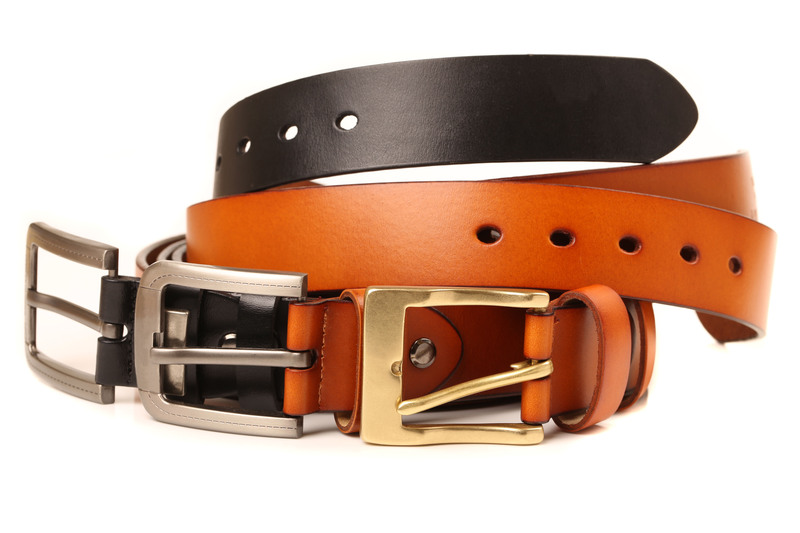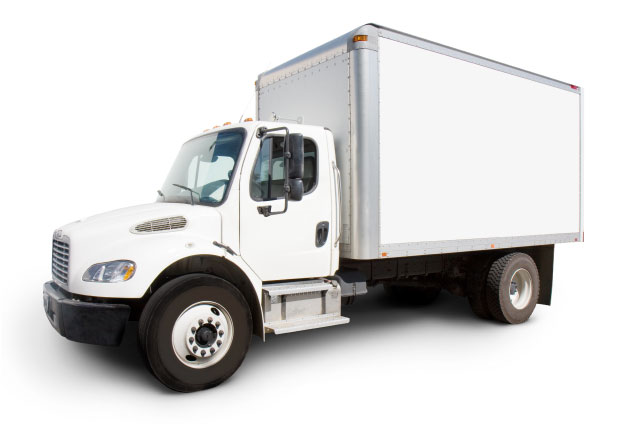Comprehensive Guide to Storing Your Freezer Effectively
Posted on 12/06/2025
Comprehensive Guide to Storing Your Freezer Effectively
Freezers are a staple in every modern home, providing a reliable way to store food for longer periods while retaining its freshness and nutritional value. However, simply placing items in your freezer is not enough if you want to maximize both efficiency and food quality. Storing your freezer effectively means utilizing space, preserving taste, and minimizing waste. In this comprehensive guide, we'll cover everything you need to know to organize your freezer like a pro.

Why Proper Freezer Storage Is Essential
A well-organized freezer offers numerous benefits, including:
- Minimizing food waste by making items easily accessible
- Maximizing space for optimal storage
- Improving energy efficiency, which can lower your bills
- Reducing the risk of freezer burn that affects taste and texture
- Allowing you to quickly find and use ingredients before they expire
Let's dive deeper into freezing strategies, organization techniques, and best practices to keep your freezer functioning at its best.
Understanding Freezer Basics
Temperature Settings
To keep your food safe and fresh, your freezer temperature should consistently be set at 0?F (-18?C) or lower. This temperature halts the growth of bacteria and prevents spoilage. Consider using a freezer thermometer to ensure your appliance maintains the recommended temperature.
Types of Freezers
- Upright Freezers: Easier to organize and access, great for frequent use.
- Chest Freezers: More energy-efficient and generally offer more storage, though accessing items at the bottom can be challenging.
- Drawer Freezers: Integrated within refrigerators, suitable for quick access to frequently used items.
Each freezer type has unique organization needs, but the core principles of effective storage remain consistent.
Strategies for Effective Freezer Organization
1. Prioritize What You Freeze
Not all foods freeze equally well. Some items, like certain fruits and vegetables, meats, bread, and baked goods, retain their flavors and textures remarkably well when frozen properly. Others, such as dairy-based sauces, fried foods, and some fresh produce, may suffer in quality.
- Best foods to freeze: Meat, poultry, fish, bread, soups, sauces, berries, and vegetables (blanched).
- Foods to avoid freezing: Creamy dairy products, eggs in the shell, high-water-content fruits and vegetables (like lettuce and cucumbers).
2. Use Proper Packaging
Air is the enemy of frozen foods. Prevent freezer burn and maintain quality by using appropriate containers and wraps, such as:
- Freezer-safe bags: Remove as much air as possible before sealing.
- Rigid containers: Ideal for soups, stews, and leftovers. Leave headspace to allow for expansion.
- Aluminum foil and plastic wrap: Double-wrapping protects food from moisture loss.
- Vacuum sealers: The gold standard for locking in freshness and extending shelf life.
Label everything with the date and contents before placing it in your freezer. This small step vastly improves the organization and helps you keep an eye on expiration dates.
3. Create Inventory and Zones
To prevent forgotten "mystery items," maintain an updated freezer inventory. Record the type of food, quantity, packaging date, and estimated expiration. Many people use a whiteboard or a spreadsheet for this purpose.
- Group similar items together: Assign freezer zones for meats, veggies, fruits, prepared meals, and desserts.
- Use bins or baskets: Easily slide out sections and access what you need without digging.
- "First In, First Out" system (FIFO): Place newly frozen items behind or beneath older ones to ensure nothing gets forgotten.
4. Maximize Space with Organization Tools
A cluttered freezer means wasted food and lost time. Try these tips to organize your freezer efficiently:
- Flat-freeze bags: Stack bags containing liquids (like soups or sauces) flat. They freeze evenly and use minimal space.
- Vertical storage: Stand bags or containers upright in bins or magazine holders for easy access.
- Shelf dividers: Separate zones and keep items upright and organized.
- Clear bins: Instantly see what's inside without rummaging.
- Label shelves or drawers: Mark each section by category for added convenience.
5. Freeze in Smaller Portions
Portioning food before freezing yields several benefits:
- Quick defrosting: Smaller portions thaw faster, saving you time.
- Waste reduction: Only use what you need rather than defrosting and refreezing large amounts.
- Meal planning: Pre-portion ingredients for easy weeknight dinners.
6. Practice Safe Freezing and Thawing
Proper freezing and thawing techniques are vital for food safety and taste:
- Cool foods before freezing: Prevents raising freezer temperature and causing ice crystals.
- Don't overload your freezer: Circulation is necessary for even freezing.
- Thaw safely: Ideally, thaw foods in the refrigerator overnight. If short on time, use the microwave or submerge in cold water (sealed packaging).
Best Practices for Long-Term Freezer Storage
Storage Times and Shelf Life
Different foods last for varying periods in the freezer. Here's a brief guide:
- Meat and Poultry: 6 to 12 months
- Fish: 3 to 6 months
- Baked goods: 2 to 6 months
- Fruits and Vegetables: 8 to 12 months
- Cooked leftovers: 2 to 3 months
Preventing Freezer Burn
Freezer burn is the result of moisture loss and exposure to air. It appears as white or grayish spots and affects both taste and texture.
- Wrap tightly and remove excess air: Always use high-quality freezer-specific wraps or bags.
- Avoid overfilling: Leave enough space for air to circulate while not letting items be exposed directly to air within the freezer.
- Prioritize FIFO: Use older products first to minimize degradation.
Maintaining an Organized Freezer: Regular Checks
- Monthly inventory checks: Remove expired or unidentifiable items.
- Reorganize as necessary: Take time to tidy up the contents every few weeks.
- Clean spills promptly: Wipe down surfaces and remove food debris to keep your freezer in top shape.
Tips and Tricks for Effective Freezer Organization
- Freeze herbs in olive oil: Chop herbs, place in ice cube trays, cover with oil, and freeze. Perfect for sauces and sautes.
- Batch prep meals: Prepare and freeze meals in advance for busy days.
- Use masking tape for labels: Write dates and contents clearly with a permanent marker for longevity.
- Freeze unfinished wine: Pour into ice cube trays and use for cooking later.
- Organize by usage: Store frequently used ingredients at eye level, and long-term items below or in the back.
Common Mistakes to Avoid When Storing Your Freezer
- Overloading or underloading: A full freezer is efficient, but overpacking prevents proper air circulation and can damage the compressor.
- Improper wrapping: Using thin bags, non-freezer-safe plastics, or not sealing tightly allows freezer burn and contamination.
- Failure to label: Leads to confusion, waste, and forgotten food.
- Irregular defrosting: For non-frost-free freezers, failing to manually defrost increases ice build-up and reduces efficiency.
- Not maintaining consistent temperature: Setting your freezer too high or allowing fluctuations can result in spoilage.

Frequently Asked Questions about Freezer Organization and Storage
How should I fill my freezer for maximum efficiency?
A full freezer retains cold better than an empty one. If your freezer is only partially full, fill gaps with jugs of water or ice packs. However, do not overload - make sure air can circulate freely for even cooling.
What's the best way to store meats and fish?
Divide into meal-sized portions, wrap tightly in plastic wrap and then aluminum foil or use vacuum-sealed bags. Label with type and date for easy identification.
How can I prevent freezer odors?
Regular cleaning, proper wrapping, and the use of an open box of baking soda can help absorb odors. Also, avoid storing open containers or pungent foods uncovered.
Is it safe to refreeze thawed food?
Generally, if food was thawed in the refrigerator and hasn't reached room temperature, it can be refrozen, though some loss of quality may occur. Avoid refreezing foods thawed at room temperature.
How can I quickly freeze large batches of food?
Use shallow containers, spread hot foods to cool quickly (never put hot foods directly in the freezer), and avoid stacking new items until fully frozen to allow cold air flow around items.
Conclusion: Mastering the Art of Freezer Storage
Whether you are a seasoned chef or a busy parent, maximizing freezer efficiency and organization saves you time, money, and energy. By following these comprehensive strategies--proper packaging, systematic organization, and mindful use--you can enjoy a fresher, more accessible, and streamlined kitchen. Remember to regularly check, clean, and adjust your system for the best long-term results.
With the right approach, effective freezer storage transforms your food habits, reduces food waste, and makes everyday meal preparation easier. Start implementing these tips today, and transform your freezer into a well-organized, efficient food preservation powerhouse!





